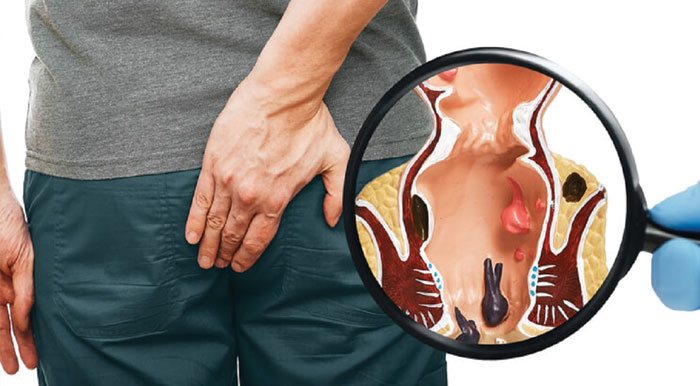Piles are inflamed and swollen tissue formations in the anal region. They can have a range of sizes, and they may be internal or external. Internal piles are the most frequent form and are often found between 2 and 4 centimeters (cm) above the anus opening. External piles form on the anus’s outer margin.
Causes of Piles
Increased pressure in the lower rectum causes piles. Under strain, the blood vessels surrounding the anus and in the rectum will stretch and enlarge or bulge, producing piles. This might be because of:
- Obesity
- Colon cancer
- Pregnancy
- Straining when passing a stool
- Spinal cord injury
- Chronic constipation
- Chronic diarrhea
Types of piles
- Grade I: Small inflammations occur, mainly inside the anus lining. They are not noticeable.
- Grade II: Grade II piles are larger than grade I piles, but also remain inside the anus. They may be pushed out during stool passage, but they will return unassisted.
- Grade III: These are prolapsed hemorrhoids that emerge outside the anus. The individual may feel them hanging from the rectum, but they can be easily re-inserted.
- Grade IV: These cannot be pushed back in and must be treated. They are big and do not enter the anus.
Symptoms
- They usually resolve themselves within a few days. A person suffering from piles may encounter the following symptoms:
- A hard, possibly painful lump may be felt around the anus. It might have coagulated blood in it. Thrombosed external hemorrhoids are blood-filled piles.
- After passing a stool, a person with piles may experience the feeling that the bowels are still full.
- Bright red blood is visible after a bowel movement.
- Itchy, red, and painful skin surrounds the anus.
- The passage of a stool causes pain.
- Piles can escalate into a more severe condition. Excessive anal bleeding may result in anemia, infection, fecal incontinence, or an inability to regulate bowel motions.
- An anal fistula is a new channel formed between the skin’s surface near the anus and the interior of the anus.
- strangulated hemorrhoid, in which the hemorrhoid’s blood supply is cut off, resulting in consequences such as infection or a blood clot
Treatment
- OTC medications-Pain relievers, ointments, lotions, and pads are available and may help relieve redness and swelling around the anus. They should not be used for more than 7 days.
- Laxatives-If a person with piles is constipated, the doctor may prescribe laxatives. These may make it easier for the individual to pass stools and relieve pressure on the lower colon.
- Surgical alternatives-Advanced Piles need surgical intervention.
- Hemorrhoidectomy-The bleeding-causing extra tissue is surgically removed. This may be accomplished in a variety of ways.
- Banding-An elastic band wrapped around the pile’s base, cutting off its blood supply. After a few days, the hemorrhoid falls off. This is effective for treating all hemorrhoids of less than grade IV status.
- Hemorrhoid stapling-Blood flow is blocked to the hemorrhoid tissue. This is a less painful procedure than hemorrhoidectomy.
- Sclerotherapy medicine is injected into the hemorrhoid to cause it to shrink. The hemorrhoid eventually shrivels up. This is effective for grade II and III hemorrhoids and is an alternative to banding.
To know more about Piles laser surgery watch our video: Laser piles surgery | Dr. Sukhvinder Singh Saggu | laser for piles

